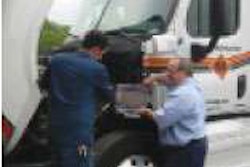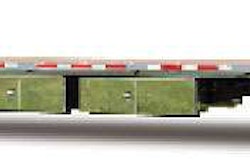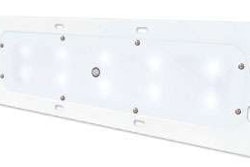Something’s gotta give

At CCJ’s 2010 Spring Symposium in May, much of the discussion focused on the Federal Motor Carrier Safety Administration’s upcoming Comprehensive Safety Analysis 2010 initiative for monitoring carrier safety. Increasingly, fleet executives are acutely aware of CSA 2010’s implications on their safety performance and their ability to haul freight.
The initiative will extend FMCSA’s reach and the frequency of interventions. As FMCSA Administrator Anne Ferro said during a statement to the House Subcommittee on Highways and Transit last month, the new Safety Measurement System will increase the number of carriers it rates “ten-fold.” The safety initiative has resulted in 35 percent more investigations in the nine states that tested the CSA 2010 system over the past 2½ years, Ferro said.
With a better understanding of CSA 2010, fleets now are turning their attention to educating their drivers on the importance of safety and compliance. With the seven Behavior Analysis Safety Improvement Categories (BASICs) tied directly to driver performance, the quality of men and women operating a fleet’s trucks is more important than ever.
In an ideal world, every carrier would strive for 100 percent violation-free roadside inspections and a driving force full of crash-free operators. But the reality of CSA 2010 is that carriers only need to be below the 72 or 77 percent threshold in their peer group depending on the BASIC category (67 or 72 percent for hazardous material carriers) to stay on the right side of the FMCSA intervention fence. Ultimately it’s up to each fleet to determine its acceptable level of violations.
One issue at hand with carriers’ increased exposure with CSA 2010 is that it juxtaposes productivity and safety. A driver has to stay on the road to earn his living (as well as make on-time deliveries), but his fleet safety director mandates strict compliance to CSA 2010 BASICs and hours-of-service regulations. To meet a carrier’s expectations, the driver requires extra safety training, performs more thorough pre- and post-trip inspections and makes more frequent visits to shop bays to correct even minor vehicle maintenance issues in order to reduce the chance of a roadside inspection. While a driver’s adherence to safety guidelines potentially eats away at drivable hours and wages, skirting the rules potentially leads to HOS and roadside violations that ultimately come back to bite the carrier.
Perhaps compliance should factor into pay rates.
Fortunately for recruiters, FMCSA recently launched the Pre-Employment Screening Program (as mandated by Congress) to help them evaluate driver candidates by providing an individual’s crash records and serious safety violations, giving safety-conscious carriers a lot more insight when deciding who to hire. “It’s up to the fleet to determine what level of risk they’re willing to take on and what their abilities are to train so that the drivers they bring in have a positive impact on their CSA 2010 score,” said Aaron Thompson, vice president of operations for Liberty, Mo.-based American Central Transport, during his Symposium presentation.
If CSA 2010 weeds out the driver pool’s worst offenders as many have predicted it will, the value of safe drivers will increase dramatically. It would seem the current cents-per-mile driver compensation standard typically based on experience and longevity misses a chance to reinforce the importance of driver safety and offers no incentive for a driver to maximize safety as well as productivity.
Perhaps the time will come when more carriers adopt a base cents-per-mile rate that includes driver safety and compliance records. After all, a driver with no unsafe driving citations and a clean logbook will be much more valuable to your company from a compliance standpoint in the new CSA 2010 climate. And as safe, savvy drivers become aware of their exemplary PSP records, they’ll have a better understanding of their value to the organization. n
Jeff CrisSey is Editor of Commercial Carrier Journal.
E-mail [email protected] or call (205) 248-1244.













